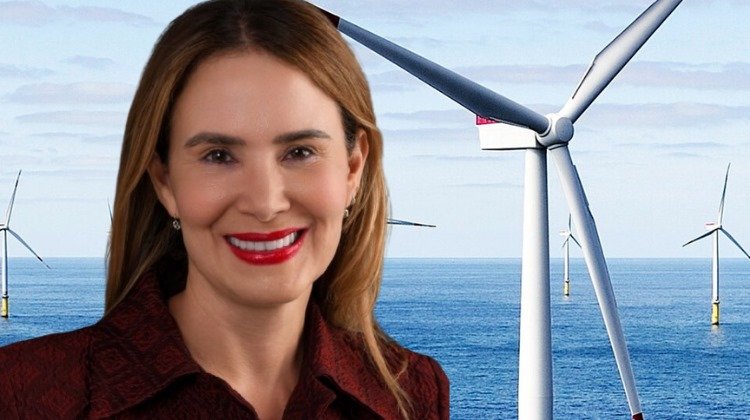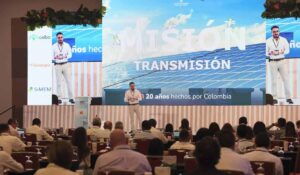Although critical aspects of the competitive process were corrected, skepticism persists due to execution in an election year and a lack of institutional certainty.
The National Hydrocarbons Agency (ANH) of Colombia published Addendum No. 7 to the permanent competitive process for granting temporary occupation permits in maritime areas, intended for the development of offshore wind energy projects.
The new roadmap incorporates substantial adjustments to the timeline, proponent qualification, offer validation, and contractual conditions, aiming to facilitate the progress of the country’s first offshore wind round.
The process involves the assignment of temporary occupation permits over 69 nominated maritime areas, with surfaces of up to 270 km² per project, and requires a minimum capacity of 200 MW per proposal. So far, eight companies have been qualified by the ANH to participate in a tender that seeks to award at least 1 GW of installed capacity, as a first step towards the national goal of 7 GW by 2040.
The offer submission stage, initially planned for May 2025, was rescheduled through Addendum No. 7 for August 21, and is expected to reveal the actual level of sector interest.
The changes were authorized by the Ministry of Mines and Energy (MME) and the General Maritime Directorate (DIMAR), and include:
- Extension of the deadline for submitting qualification documentation until October 28, 2024, and the definitive publication of qualified proponents for December 27 of the same year.
- Offer submission starting August 21, 2025, followed by a validation and technical evaluation process until October 22.
- Formalization of awards between November 2025 and February 2026, with the issuance of the temporary occupation permit by DIMAR set for April 2026.
Regulatory reforms were also introduced aimed at improving legal certainty for investors. Among them are the recognition of the right to withdraw without penalty for reasons of technical or economic unviability not attributable to the proponent, the revision of documentation requirements, the clarification of evaluation criteria, and the modification of the S-Curve and contractual milestones.
Despite these adjustments addressing participants’ observations (since 2023, they have pointed to structural difficulties), the lack of concrete calendar definitions deepens uncertainty in the sector.
As explained by Liza Urbina, a lawyer specialized in energy regulation, “companies have made administrative efforts, submitted technical comments, and assumed investments, but there is still no award of any permit.”
In a conversation with Energía Estratégica, the consultant emphasized that while the government promotes this round as a central component of its energy transition strategy, concrete progress has yet to materialize.
A Silent Retreat
The uncertainty surrounding the offshore auction is not an isolated event. The wind segment as a whole—including onshore projects—is undergoing a retreat that casts doubt on the prospects for new investments in the short and medium term.
“Large-scale companies are negotiating their exit from Colombia. In onshore, there are also players looking to divest or transfer assets, even at advanced stages of development,” the specialist noted.
Among the most significant cases is Statkraft, which agreed with Ecopetrol to sell a portfolio of ten companies with renewable projects in Colombia—including three wind developments with a combined capacity of up to 750 MW distributed across La Guajira, Sucre, Córdoba, Caldas, and Magdalena—as part of its exit from the local market.
Adding to this picture is the recent acquisition, also by Ecopetrol, of the Windpeshi wind project (205 MW) located between Uribia and Maicao, in La Guajira, which it bought from Enel for USD 50 million, with planned investments of USD 350 million until 2027.
The sector’s loss of dynamism is associated with internal and external factors, such as the lack of effective permits, the absence of clear regulatory signals, and institutional weakness as the main obstacles. Internationally, some North American investment banks have chosen to freeze or withdraw financing in markets considered to have high political risk.
“There will be no effective results within the established deadlines. The process has been marked by multiple addenda, adjustments to the bidding documents, and changes in institutional focus. While the sector has been heard, there is still a lack of political will to execute what was agreed,” Urbina stated.
One of the critical points identified by the consultant is the initial fragmentation in process management. In an initial phase, DIMAR led the issuance of permits without full technical competence; subsequently, responsibility was transferred to the ANH, which adapted awarding mechanisms typical of the hydrocarbon sector to a market with no local track record, generating normative demands that were “misaligned” with the sector’s reality.
Additionally, the proposed schedule to close the award in April 2026 coincides with an election year, which—according to market players—introduces an additional risk, as the general perception is that an eventual change in administration could alter institutional priorities or slow down the execution of pending administrative acts.
Despite the skepticism, the sector recognizes that the process has evolved. The inclusion of grounds for withdrawal, the reduction of penalties, and the clarity in technical criteria represent significant progress.
Nevertheless, the shared conclusion among consultants is that execution will only be viable if institutional channels are stabilized and the schedule is met without further delays.
“Companies have been proactive, but this will only materialize if the State acts with technical rigor and stops introducing modifications on the fly. Sticking to the schedule is the only way to regain confidence,” remarked the lawyer specialized in energy regulation.
Source: Energía – Energía Estratégica








